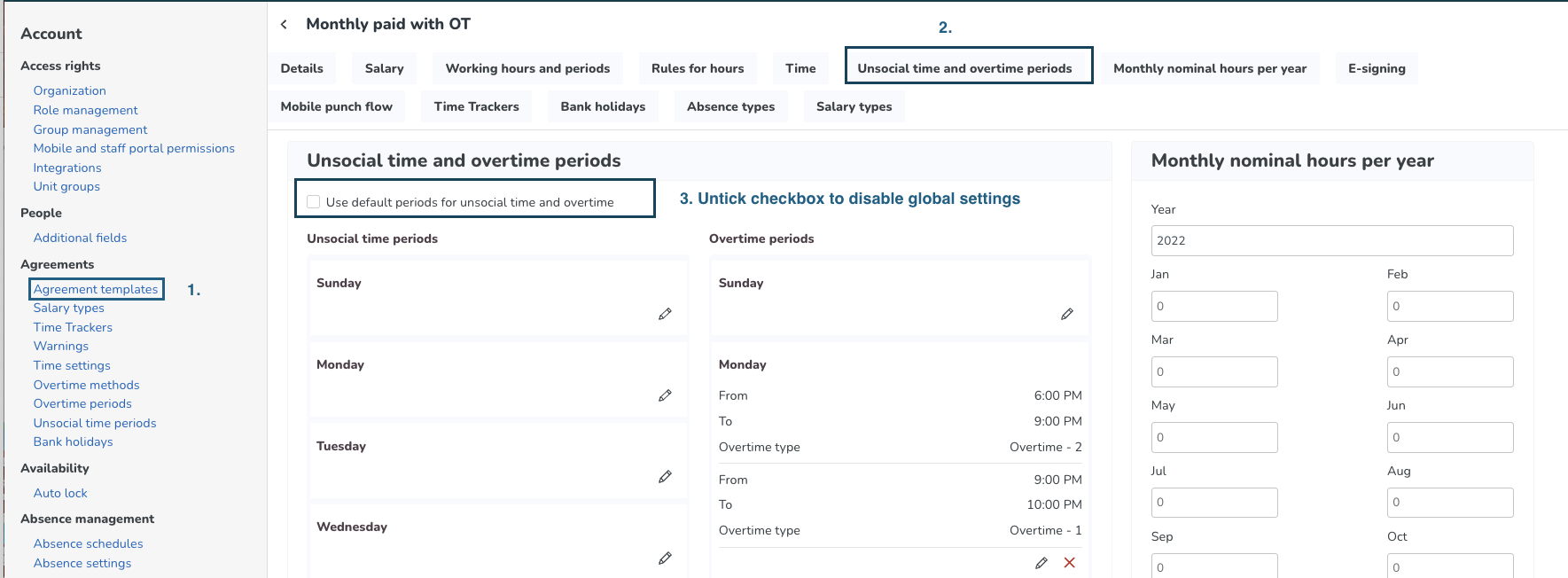Overtime FAQ
Q: What is a global overtime period and how is it used?
A: Global overtime is used to set periods that, on an organizational level, generate additional compensations to an employee who logs a shift during this window. These global settings are then used by default in agreement templates and individual agreements.
Overtime (OT) periods are defined on day level and are global for the account. If there are agreements where different OT periods apply, it's defined in that particular agreement.

(picture 1.a - global overtime periods)

(picture 1.b - overtime periods on agreement template)
Q: Where should I configure overtime periods?
A: You can configure overtime periods on an organization level, on an agreement template level, or use a combination of both. If set on the agreement template it will override the global level.
Q: If I have a salary type rule that replaces the overtime salary type with 0, will a warning be generated?
A: No warning will be generated.
Q: How do overtime and overtime methods fit together?
A: Overtime is time worked in addition to normal working hours. Overtime methods are different rules that dictate how and when overtime should be paid out to your employees. Read about practical examples of overtime methods here.
Q: How are salary types generated from overtime?
A: Overtime methods in Quinyx are generating overtime based on different factors. Click here to read more about salary types generated from overtime methods.
Q: Can basic salary types be generated simultaneously with overtime salary?
A: Yes, you can generate basic salary types simultaneously with overtime by creating salary type rules. Click here to read more about salary type rules.

